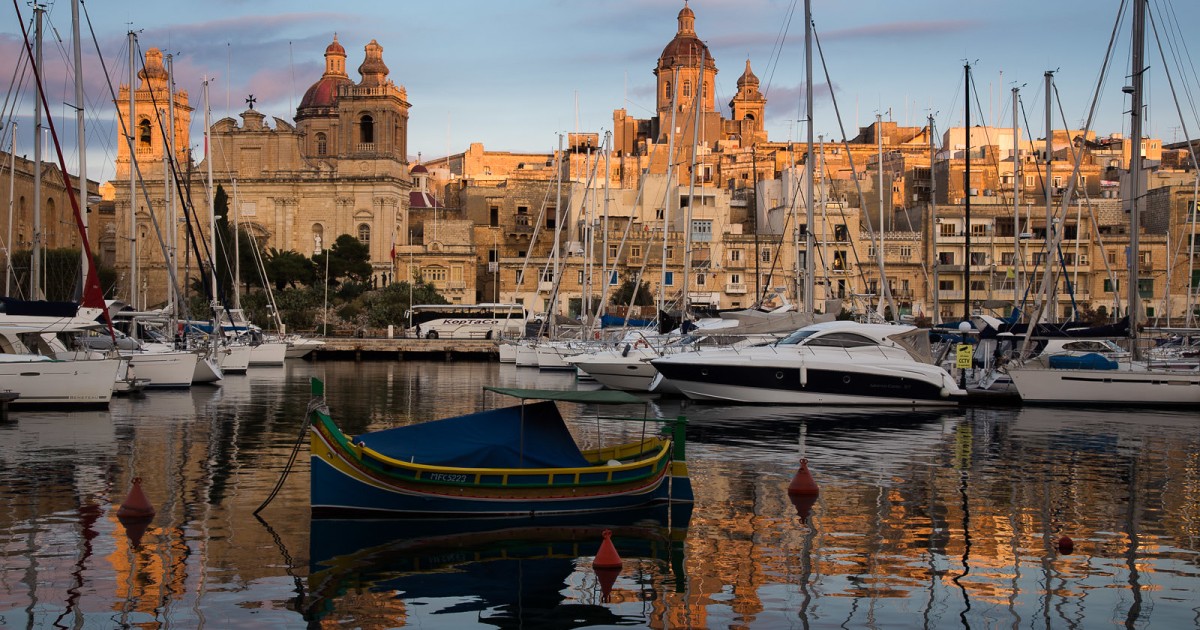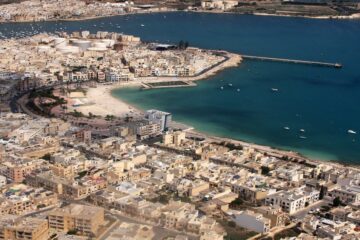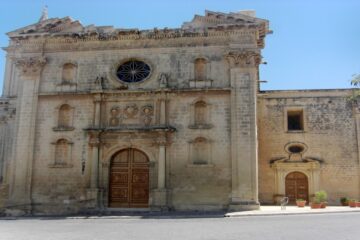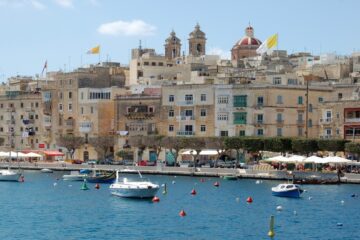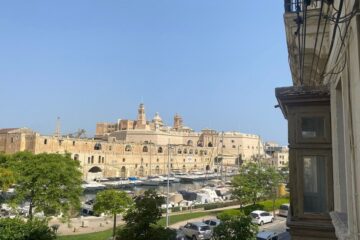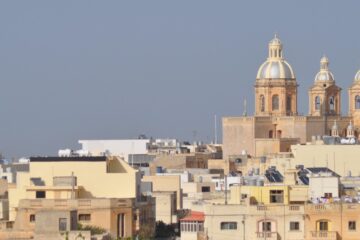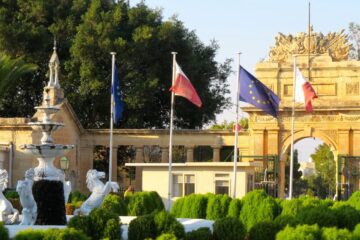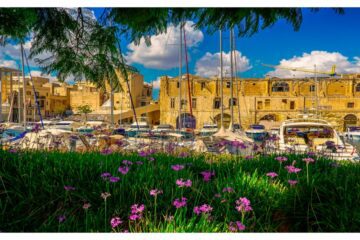The Three Cities of Malta are a trio of fortified cities that lie directly across the Grand Harbour from Valletta. They consist of Vittoriosa, Senglea, and Cospicua.
The Three Cities have a long and rich history, dating back to the Phoenician period. They were later ruled by the Romans, Arabs, Normans, and Spanish. In 1530, the Order of Saint John arrived in Malta, and the Three Cities became their headquarters.
The Three Cities played a vital role in the Great Siege of Malta of 1565. The Ottomans laid siege to the islands for four months, but the Knights of Saint John and the Maltese people were eventually able to repel them. The Great Siege was a turning point in Maltese history, and it helped to secure the island’s independence.
The Three Cities continued to be important during British colonial rule. They were home to a number of British military installations, including Fort St. Angelo, which was the headquarters of the British Mediterranean Fleet.
The Three Cities were heavily damaged during World War II, but they have since been restored. Today, they are a popular tourist destination, offering visitors a glimpse into Malta’s maritime past.
Here are some of the things you can see and do in the Three Cities:
Things to do in Vittoriosa
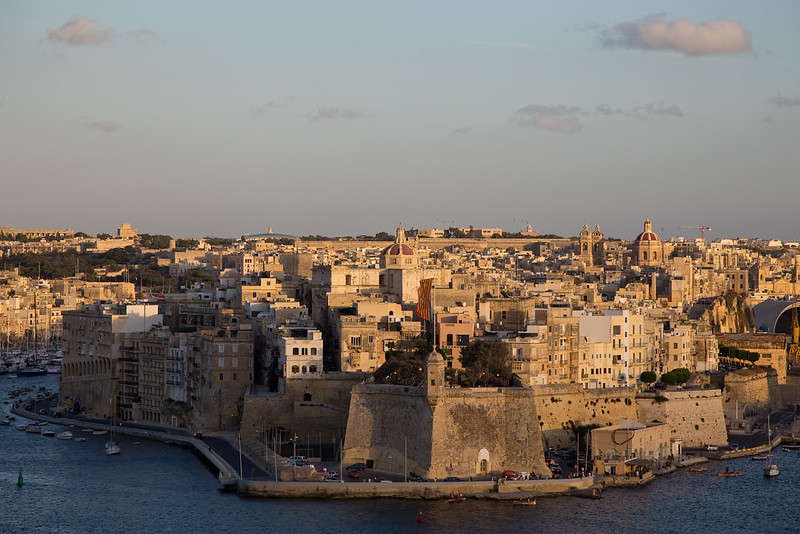
Vittoriosa has a long and rich history, dating back to the Phoenician period. It was later ruled by the Romans, Arabs, Normans, and Spanish. In 1530, the Order of Saint John arrived in Malta, and Vittoriosa became their headquarters.
Vittoriosa played a vital role in the Great Siege of Malta of 1565. The Ottomans laid siege to the islands for four months, but the Knights of Saint John and the Maltese people were eventually able to repel them. The Great Siege was a turning point in Maltese history, and it helped to secure the island’s independence.
Vittoriosa continued to be important during British colonial rule. It was home to a number of British military installations, including Fort St. Angelo, which was the headquarters of the British Mediterranean Fleet.
Vittoriosa was heavily damaged during World War II, but it has since been restored. Today, it is a popular tourist destination, offering visitors a glimpse into Malta’s maritime past.
Some of the most popular tourist attractions in Vittoriosa include:
1- Fort St. Angelo
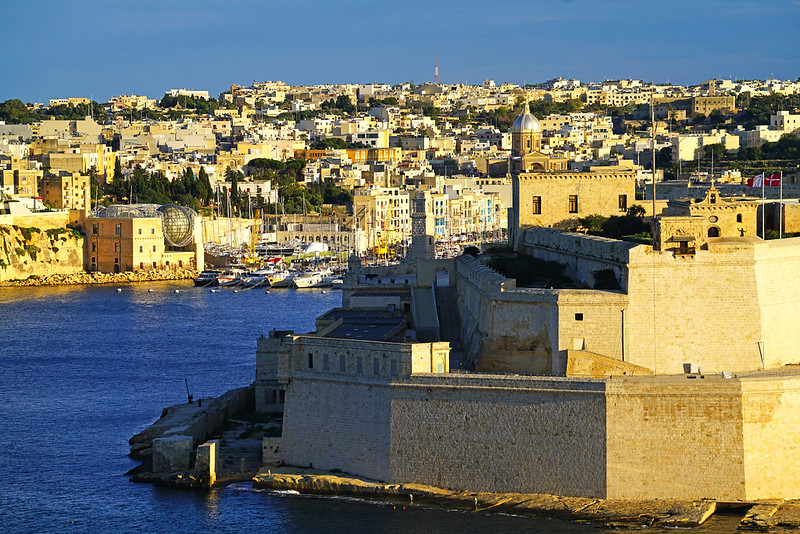
Fort St. Angelo is an impressive bastioned fort in (Birgu) Vittoriosa, Malta, located at the center of the Grand Harbour. It was originally built in the medieval period as a castle called the Castrum Maris, but it was rebuilt by the Order of Saint John as a bastioned fort called Fort Saint Angelo between the 1530s and the 1560s.
Fort St. Angelo is best known for its role as the Order’s headquarters during the Great Siege of Malta of 1565. The fort was heavily bombarded by the Ottoman Turks during the siege, but it held out, and the Turks were eventually defeated.
Fort St. Angelo continued to be used as a military fortification until the 1970s. Today, it houses a maritime museum and offers stunning views of the Grand Harbour.
Visitors to Fort St. Angelo can learn about the fort’s long and rich history, and see a variety of exhibits on Malta’s maritime heritage. The fort also has a number of observation decks, offering panoramic views of the Grand Harbour and Valletta.
Fort St. Angelo is a must-see for anyone interested in Maltese history and culture. It is a truly impressive structure, and it offers a unique perspective on Malta’s maritime past.
2- The Inquisitor’s Palace
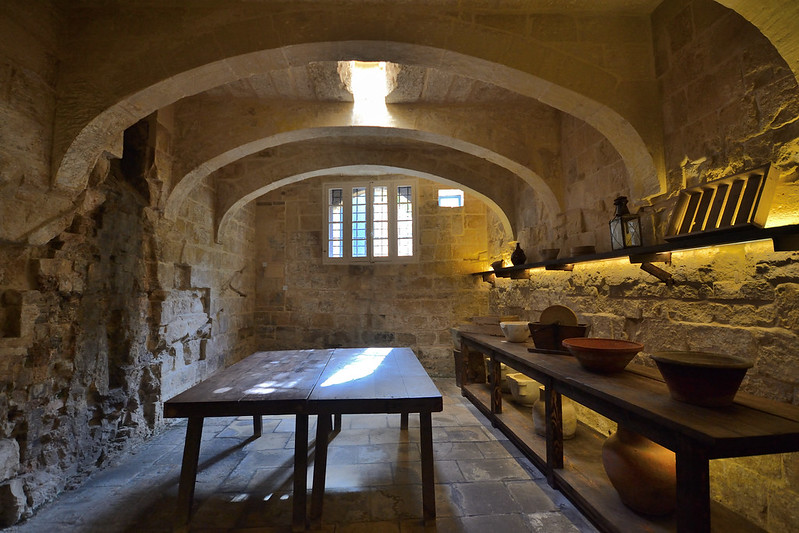
The Inquisitor’s Palace in Vittoriosa (Birgu), Malta, was the headquarters of the Inquisition in Malta from 1574 to 1798. It is now a museum that tells the story of this dark period in Maltese history.
The Inquisition was a Catholic tribunal that was established in the 13th century to combat heresy. It was active in many European countries, including Malta. The Inquisition in Malta was known for its harsh punishments, which included torture and execution.
The Inquisitor’s Palace is a large and imposing building. It has a number of rooms and cells that were used by the Inquisition to interrogate and imprison suspects. The palace also has a courtroom and a torture chamber.
The museum at the Inquisitor’s Palace tells the story of the Inquisition in Malta through a series of exhibits. The exhibits cover topics such as the history of the Inquisition, the methods used by the Inquisition, and the stories of some of the people who were persecuted by the Inquisition.
The Inquisitor’s Palace is a sobering but important place to visit. It is a reminder of the dark side of human nature and the dangers of religious intolerance.
Here are some of the things that visitors can see and do at the Inquisitor’s Palace:
- Visit the Inquisitor’s chambers: The Inquisitor’s chambers are where the Inquisition conducted its work. Visitors can see the Inquisitor’s desk, the torture chamber, and the courtroom.
- Learn about the methods of the Inquisition: The museum has a number of exhibits on the methods used by the Inquisition to interrogate and imprison suspects. Visitors can learn about the different types of torture that were used, and the conditions in which prisoners were kept.
- Hear the stories of the victims: The museum has a number of exhibits on the people who were persecuted by the Inquisition. Visitors can learn about the different types of people who were targeted, and the reasons why they were persecuted.
3- The Church of Our Lady of Victory
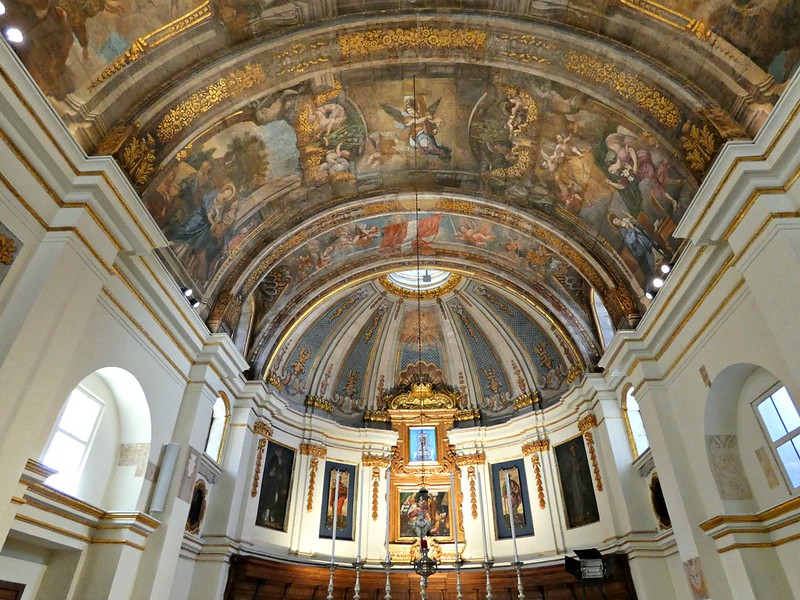
The Church of Our Lady of Victory in Vittoriosa (Birgu), Malta, was built to commemorate the victory of the Knights of St. John over the Ottoman Turks in the Great Siege of Malta. It is home to a beautiful altarpiece by the Italian artist Caravaggio.
The church was built in the 17th century, and it is one of the finest examples of Baroque architecture in Malta. The church has a large and impressive interior, with a number of chapels and side altars.
The altarpiece by Caravaggio is one of the most famous works of art in Malta. It depicts the beheading of St. John the Baptist. The altarpiece is considered to be one of Caravaggio’s masterpieces, and it is one of the most popular tourist attractions in Malta.
Here are some of the things that visitors can see and do at the Church of Our Lady of Victory:
- See the Caravaggio altarpiece: The Caravaggio altarpiece is the main attraction at the church. It is a beautiful and powerful work of art, and it is a must-see for anyone visiting Malta.
- Visit the chapels and side altars: The church has a number of chapels and side altars, each with its own unique features. Visitors can take their time to explore the chapels and altars, and to admire the artwork and architecture.
- Attend a mass: The church is still in use today, and visitors are welcome to attend a mass. This is a great way to experience the Maltese Catholic faith and to see the church in use.
Things to do in Senglea
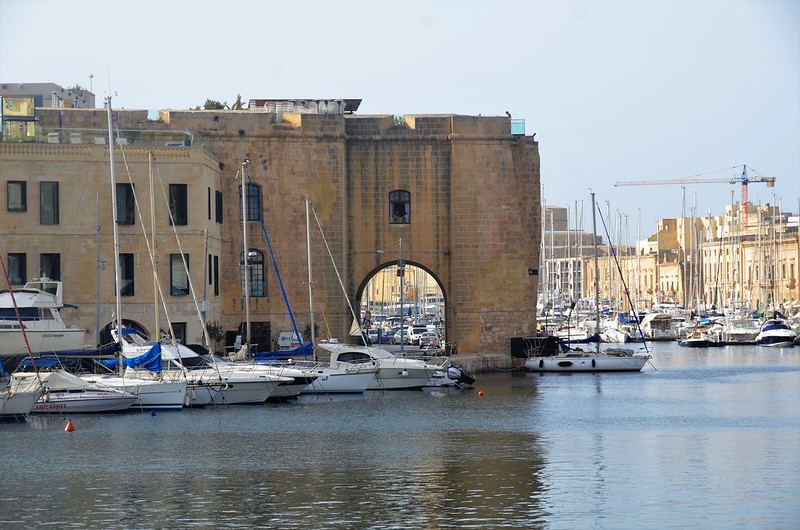
Senglea, also known as Isla, is the smallest of the Three Cities in Malta. It is a picturesque city with narrow streets, colorful buildings, and stunning views of the Grand Harbour.
Senglea was founded in 1554 by the Knights of St. John and played an essential role in the Great Siege of Malta in 1565. After the siege, the city was rebuilt and fortified, becoming a prosperous city home to a number of wealthy merchants and shipbuilders.
Senglea continued to be an important city throughout the British colonial period but was heavily damaged during World War II. It has since been restored and is now a popular tourist destination, offering visitors a glimpse into Malta’s maritime past.
Some of the must-see attractions in Senglea include:
1- The Garden of Serenity
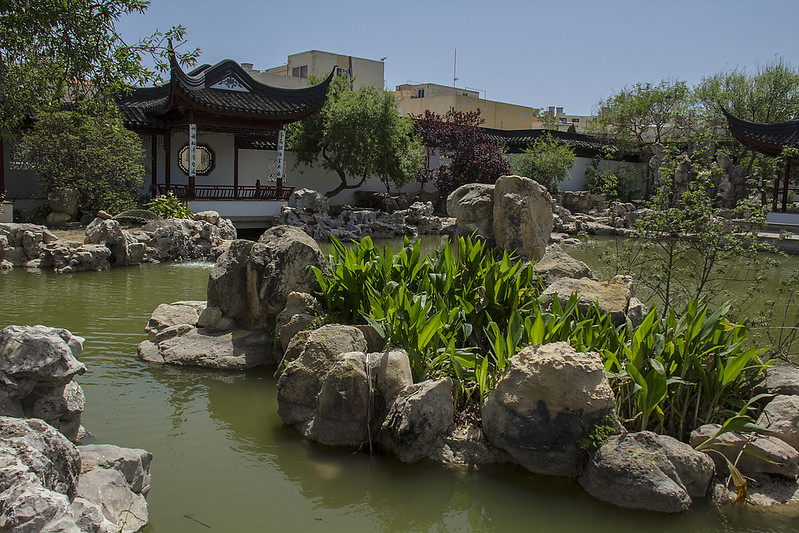
The garden was built in 1997 as a gift from the People’s Republic of China to Malta. It is designed in the traditional Chinese style, with features such as a pond, a zigzag bridge, and a variety of plants and trees.
Visitors to the Garden of Serenity can enjoy a variety of activities, such as:
- Take a walk around the garden: The garden is relatively small, but it is well-designed and there is a lot to see. Visitors can take a walk around the garden and admire the plants and trees, the pond, and the zigzag bridge.
- Sit and relax: There are a number of benches and pavilions in the garden where visitors can sit and relax. This is a great place to enjoy the peace and quiet of the garden, and to take in the views of the Grand Harbour and Valletta.
- Have a picnic: Visitors are welcome to bring their own picnics and enjoy them in the garden. This is a great way to save money and have a leisurely lunch or dinner.
The Garden of Serenity is a truly unique and special place. It is a must-visit for anyone interested in Chinese culture, or who is looking for a place to relax and enjoy the peace and quiet.
2- The Church of St. Julian
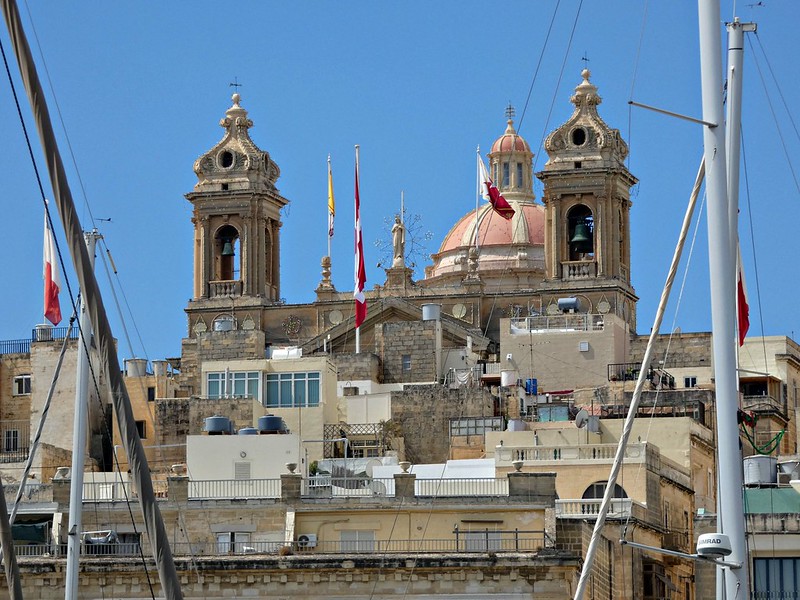
The Church of St. Julian is located in Senglea, a small city on the coast of Malta. The church was built in the 16th century and is dedicated to Saint Julian, a Christian martyr who was killed in the 4th century. The church is home to a number of works of art, including the altarpiece by Preti.
Preti was a Maltese artist who lived from 1613 to 1699. He is considered to be one of the most important Maltese artists of his time. Preti’s work is known for its dramatic chiaroscuro and its realistic depiction of human figures.
The altarpiece in the Church of St. Julian is one of Preti’s most important works. It depicts the beheading of Saint Julian. The altarpiece is large and complex, with a number of figures and architectural elements. The altarpiece is a masterpiece of Maltese art and is one of the most important works of art in Malta.
3- The Fort of St. Michael
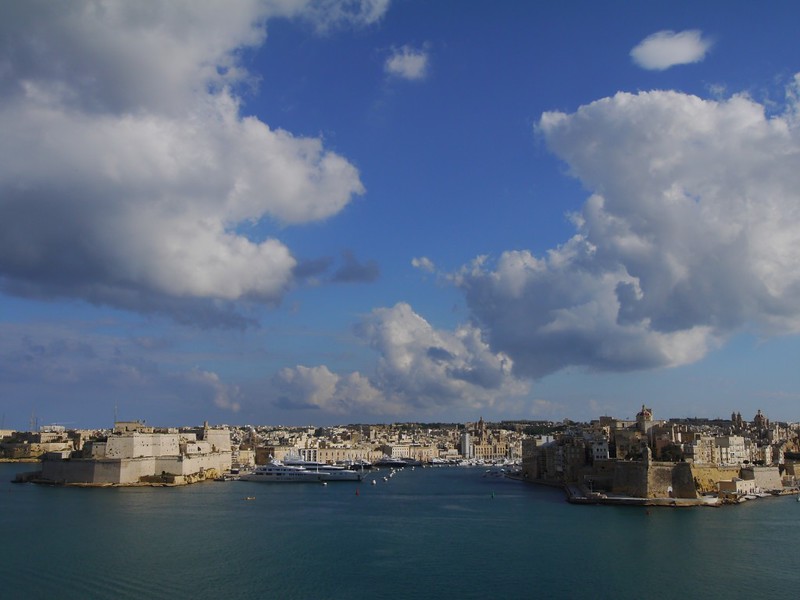
The Fort of St. Michael was built in the 16th century by the Knights of St. John to protect the city of Senglea from attack. It is located on the landward side of the city, overlooking the Grand Harbour. The fort is named after Saint Michael, the archangel who is often depicted as a warrior.
The Fort of St. Michael played a significant role in the Great Siege of Malta in 1565. The fort was heavily bombarded by the Ottoman forces, but it held out for the entire siege. The fort’s resistance helped to ensure the victory of the Knights of St. John over the Ottomans.
After the siege, the Fort of St. Michael continued to be used as a military installation. However, the fort’s importance declined in the 19th century, as Malta became a British colony. The fort was eventually decommissioned in the early 20th century.
Today, the Fort of St. Michael houses a restaurant and offers stunning views of the Grand Harbour. The restaurant is located in the fort’s cavalier, which is a raised platform that was used to defend the fort during sieges. The cavalier offers panoramic views of the Grand Harbour, Valletta, and the surrounding area.
The Fort of St. Michael is a popular tourist destination. Visitors can enjoy the views from the cavalier, dine at the restaurant, and learn about the fort’s history from the informative exhibits.
Things to do in Cospicua
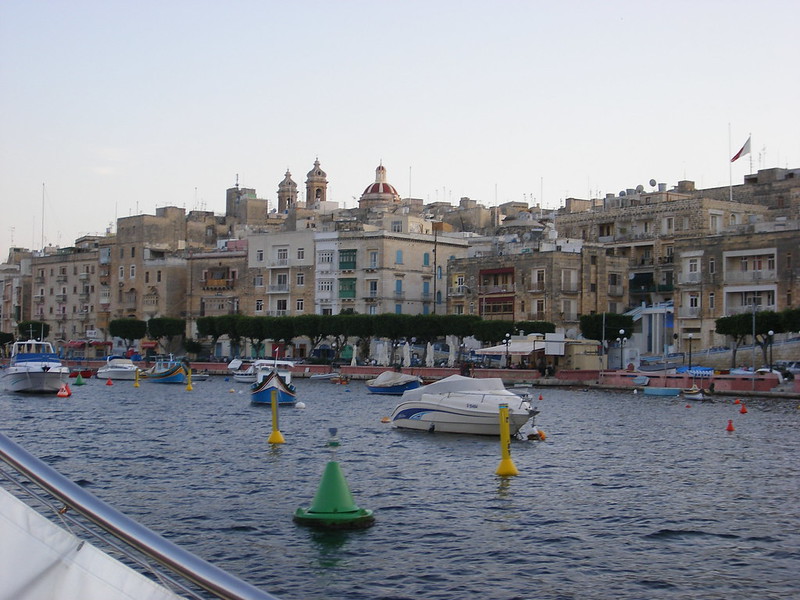
Cospicua is the largest of the Three Cities in Malta. It is a vibrant city with a mix of old and new. The city is home to a number of historical landmarks, including the Parish Church of the Immaculate Conception, the Bir Mula Heritage Museum, and the Cottonera Lines fortifications. Cospicua is also a major commercial and industrial center, and it is home to a number of shipyards and other businesses.
The city’s name, Bormla, comes from the Maltese word for “well”. This is because Cospicua is home to a number of freshwater wells, which were once essential for the city’s water supply.
Cospicua is a popular tourist destination, and it is known for its friendly people and its lively atmosphere. The city is also home to a number of restaurants, bars, and shops.
Some of the must-see attractions in Cospicua include:
1- The Parish Church of Our Lady of the Immaculate Conception
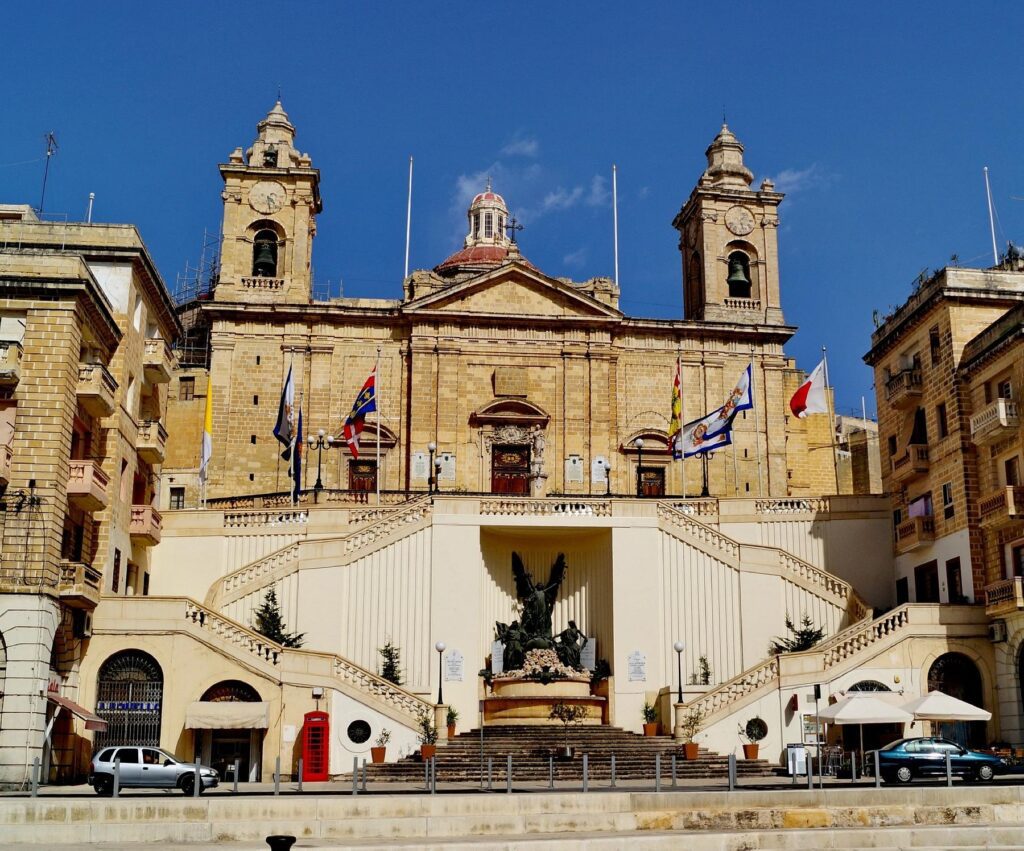
The Parish Church of Our Lady of the Immaculate Conception in Cospicua, Malta is the largest and most impressive church in the Three Cities. It was built in the 17th century and is dedicated to the Immaculate Conception of the Virgin Mary. The church is home to a number of works of art, including a beautiful altarpiece by the Maltese artist Mattia Preti.
The church is a Baroque masterpiece, with a richly decorated interior. The altarpiece by Preti is one of the largest and most important works of art in Malta. It depicts the Assumption of the Virgin Mary and is considered to be one of Preti’s finest works.
The church is also home to a number of other works of art, including paintings, sculptures, and stained glass windows. The church is a popular tourist destination and is one of the most important religious sites in Malta.
Here are some of the things you can see and do at the Parish Church of Our Lady of the Immaculate Conception:
- Admire the beautiful altarpiece by Mattia Preti.
- Explore the richly decorated interior of the church.
- See the other works of art, including paintings, sculptures, and stained glass windows.
- Attend a mass or other religious service.
- Simply enjoy the peaceful atmosphere of the church.
The Parish Church of Our Lady of the Immaculate Conception is a must-see for any visitor to Cospicua. It is a beautiful and historic church with a lot to offer visitors.
2- The Malta Maritime Museum
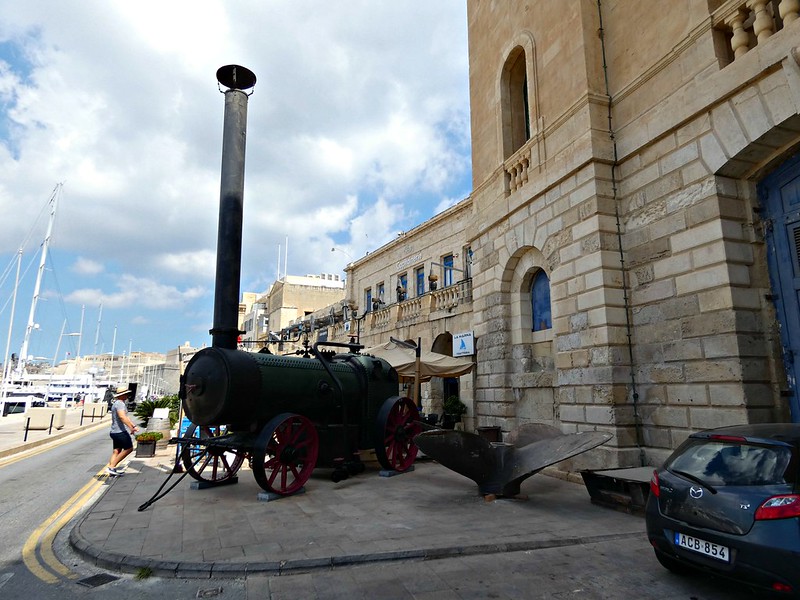
The Malta Maritime Museum in Cospicua is the largest museum on the island of Malta. It is housed in the former Royal Naval Bakery, which was built in the 1840s as the main bakery for the Mediterranean Fleet. The museum has a collection of over 20,000 artifacts, and it tells the story of Malta’s maritime history, from the Phoenicians to the present day.
The museum is divided into a number of sections, each of which focuses on a different aspect of Malta’s maritime heritage. The sections include:
- The Phoenicians and the Romans: This section explores Malta’s role in the maritime trade of the Phoenicians and Romans.
- The Knights of St. John: This section examines Malta’s role as a naval base for the Knights of St. John.
- The British Period: This section looks at Malta’s maritime history during the British period.
- The 20th Century: This section covers Malta’s maritime history during the 20th century, including its role in World War II.
The museum has a number of exhibits that are of particular interest. These include:
- The largest known Roman anchor in the world: This anchor is over 2,000 years old and weighs over 4 tons.
- The earliest known ex-voto on the island: This ex-voto is a small bronze boat that was dedicated to the gods by a sailor who had survived a shipwreck.
- The Order of St. John’s largest ship model: This model is of the San Giovanni, a galleon that was built in 1669.
- The vastest collection of cannon on the island: This collection includes cannons from a variety of different periods, including the Bronze Age, the Roman period, and the Middle Ages.
- The Napoleonic figurehead of the 110-gun ship HMS Hibernia: This figurehead is over 20 feet tall and depicts the goddess Minerva.
- A 1950s working marine steam engine: This engine was used to power a tugboat.
- A collection of over 60 traditional boats: These boats include fishing boats, rowing boats, and sailing boats.
3- The Gardjola Gardens
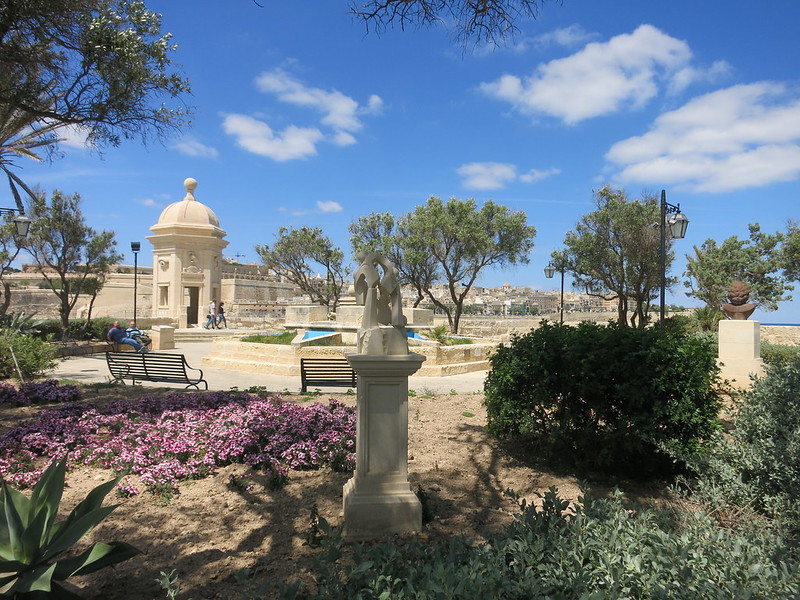
The Gardjola Gardens in Cospicua, Malta are a beautiful oasis in the heart of the city. The gardens are located on the highest point of the Three Cities, and they offer stunning views of the Grand Harbour and Valletta.
The gardens were originally built in the 16th century as a lookout post. The word “gardjola” comes from the Maltese word for “lookout”. The gardens were used to keep watch for enemy ships and to signal to the other forts in the Three Cities.
In the 19th century, the Gardjola Gardens were converted into a public park. The gardens were planted with trees and flowers, and they became a popular place for locals to relax and enjoy the views.
Today, the Gardjola Gardens are one of the most popular tourist attractions in Cospicua. Visitors can enjoy the stunning views, take a walk through the gardens, or simply relax on a bench and enjoy the peace and quiet.
The Gardjola Gardens are a great place to visit at any time of day. However, the best time to visit is at sunset, when the views of the Grand Harbour and Valletta are truly spectacular.
Here are some of the things you can do at the Gardjola Gardens:
- Enjoy the stunning views of the Grand Harbour and Valletta.
- Take a walk through the gardens and admire the trees and flowers.
- Relax on a bench and enjoy the peace and quiet.
- Have a picnic with family and friends.
- Visit the Gardjola Tower, which is located in the center of the gardens. The tower offers even more stunning views of the surrounding area.
Getting around the Three Cities
The Three Cities of Malta are best explored on foot. The narrow streets and alleyways are full of charm and character, and you can easily get lost in the maze of streets and discover hidden gems.
Here are some of the things you can see and do when exploring the Three Cities on foot:
- Visit the many churches and chapels in the Three Cities.
- Admire the traditional Maltese architecture.
- Shop for souvenirs in the many boutiques and shops.
- Stop for a coffee or lunch at one of the many cafes and restaurants.
- Enjoy the views of the Grand Harbour from the many viewpoints.
If you’re feeling more energetic, you can also rent a bicycle and explore the Three Cities on two wheels. This is a great way to cover more ground and see more of the area.
Another great way to explore the Three Cities is by taking a boat tour of the Grand Harbour. This is a great way to see the Three Cities from a different perspective and to learn more about their history.
No matter how you choose to explore the Three Cities, you’re sure to have a wonderful time. The Three Cities are a beautiful and unique place that has something to offer everyone.
Here are some additional tips for exploring the Three Cities:
- Wear comfortable shoes, as you’ll be doing a lot of walking.
- Bring a hat and sunscreen, especially if you’re visiting in the summer.
- Bring a bottle of water, as it can get quite hot in the Three Cities.
- Be aware of your surroundings, as the streets can be quite narrow and crowded.
- Don’t be afraid to get lost and explore the many hidden gems in the Three Cities.
- Take your time and enjoy the experience. The Three Cities are a special place, and there’s no rush to see everything.
Where to eat and drink
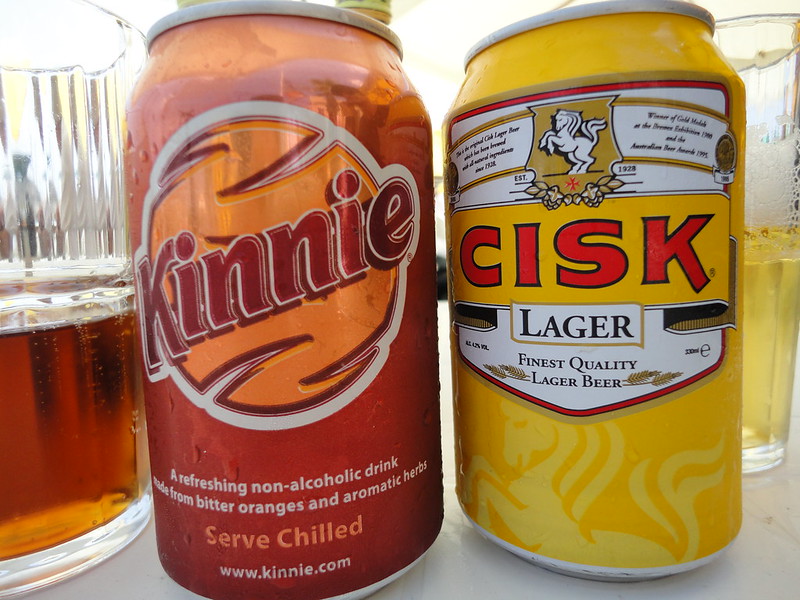
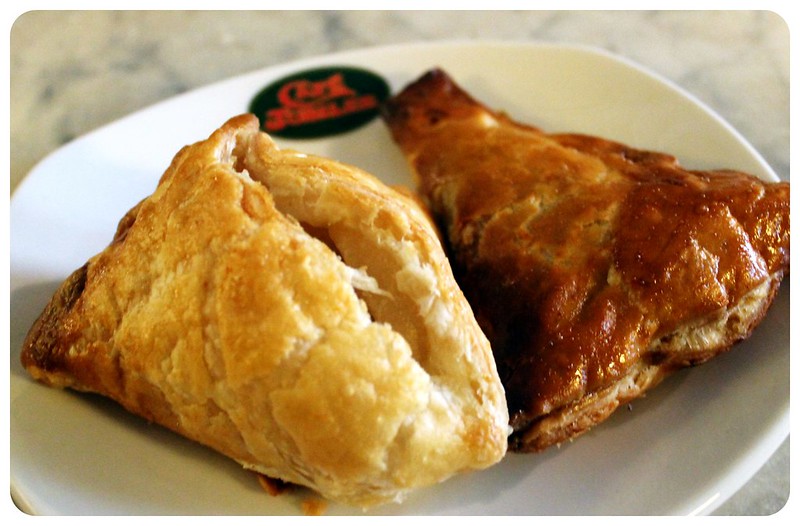
The Three Cities have a variety of restaurants and cafes to choose from. You can enjoy traditional Maltese cuisine, fresh seafood, or international fare. There are also a number of bars and pubs where you can relax and enjoy a drink.
Here are some of the best restaurants in the Three Cities:
- Il-Hnejja Restaurant: This restaurant serves traditional Maltese cuisine in a beautiful setting.
- Tal-Barklor Restaurant: This restaurant is known for its fresh seafood and traditional Maltese dishes.
- Tal-Petut Restaurant: This restaurant is located in a historic building and offers a variety of Maltese and international dishes.
- Cospicua Garden Restaurant: This restaurant offers a variety of Mediterranean and international dishes, as well as stunning views of the Grand Harbour.
- Senglea Marina Restaurant: This restaurant is located on the waterfront and offers a variety of fresh seafood dishes.
If you’re looking for a more casual dining experience, there are also a number of cafes and bars in the Three Cities. Here are a few suggestions:
- Cafe Rouge: This cafe serves a variety of coffees, teas, and snacks.
- San Giorgio Cafe: This cafe offers a variety of coffees, teas, and cakes, as well as stunning views of the Grand Harbour.
- VAULT1: This cafe offers a variety of healthy and delicious food options, as well as a relaxed atmosphere.
- Hammets Macina: This cafe and bar is located in a historic building and offers a variety of coffees, cocktails, and snacks.
- Mood Bistro: This bistro offers a variety of Mediterranean and international dishes, as well as a relaxed atmosphere.
No matter what you’re in the mood for, you’re sure to find a restaurant or cafe in the Three Cities to your taste. The Three Cities have a variety of dining options to choose from, so you’re sure to find something to satisfy your hunger and thirst.
Tips for visiting the Three Cities of Malta
- The best time to visit the Three Cities is during the spring or autumn when the weather is mild.
- Wear comfortable shoes, as you will be doing a lot of walking.
- Bring a hat and sunscreen, especially if you are visiting during the summer months.
- Be respectful of the local culture and customs.
- Don’t forget to try some of the delicious Maltese food

